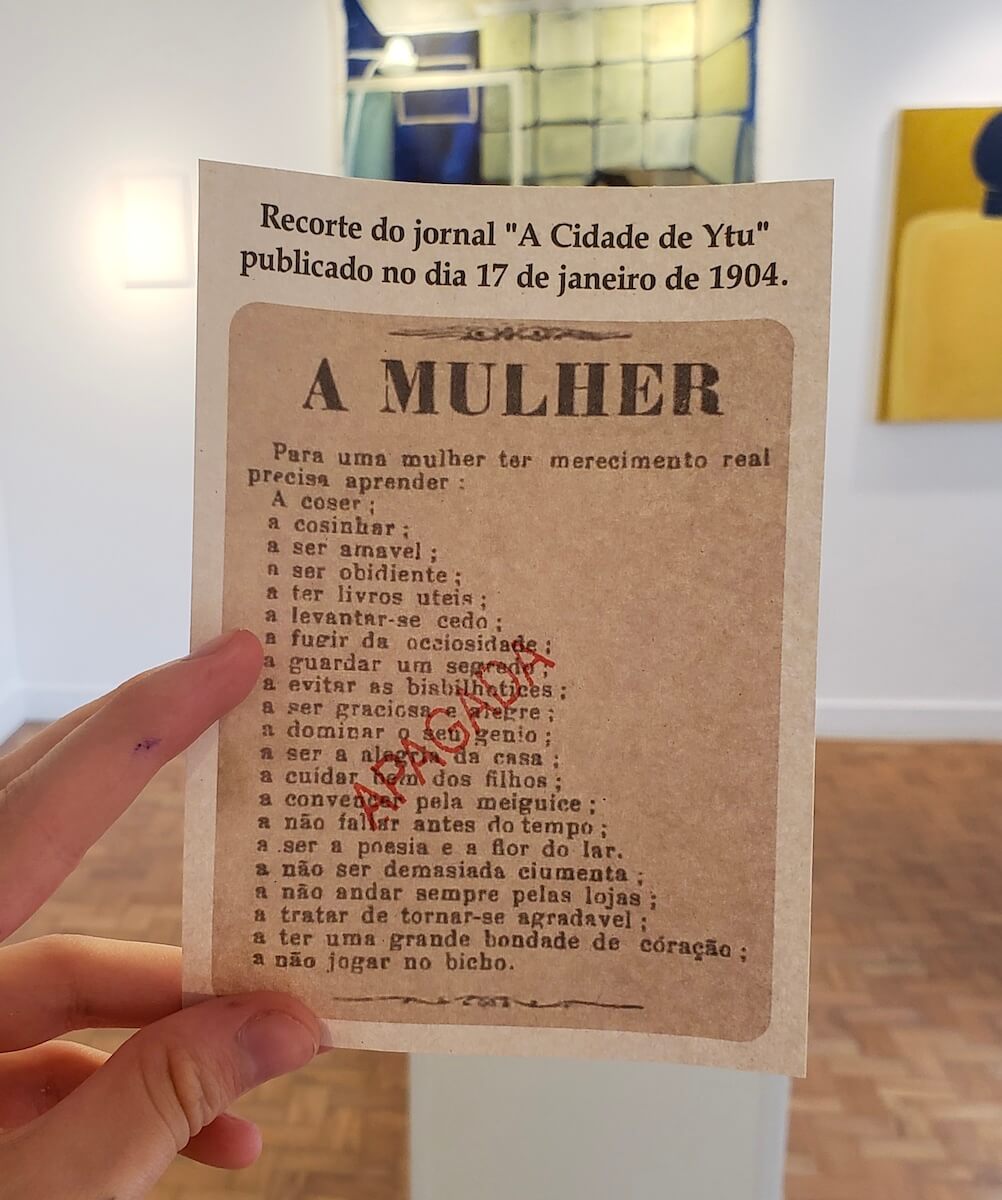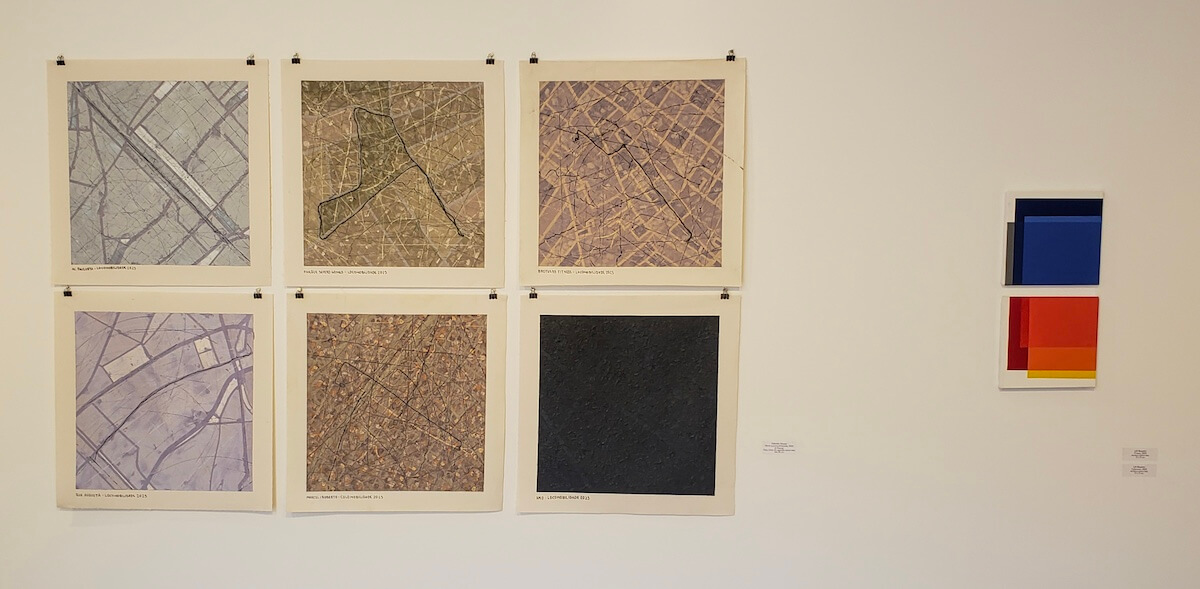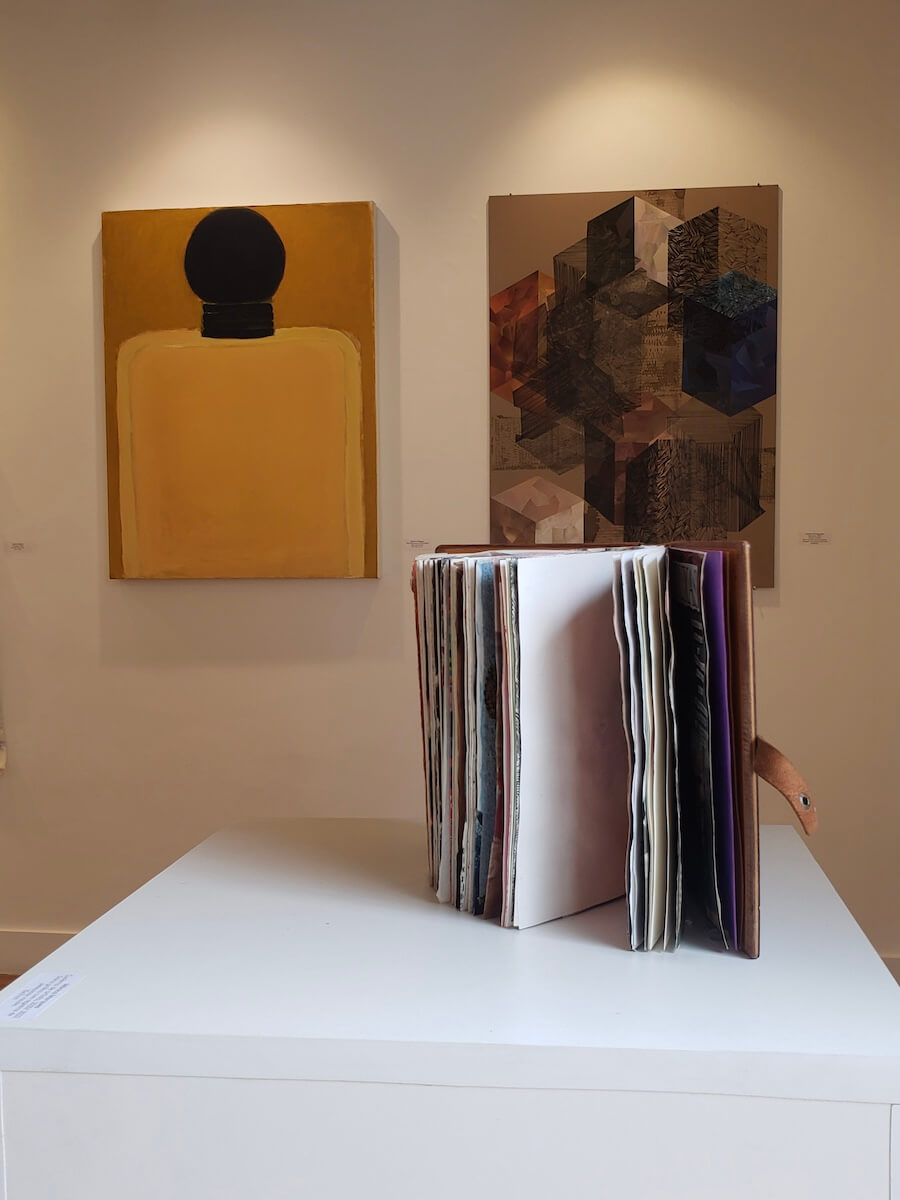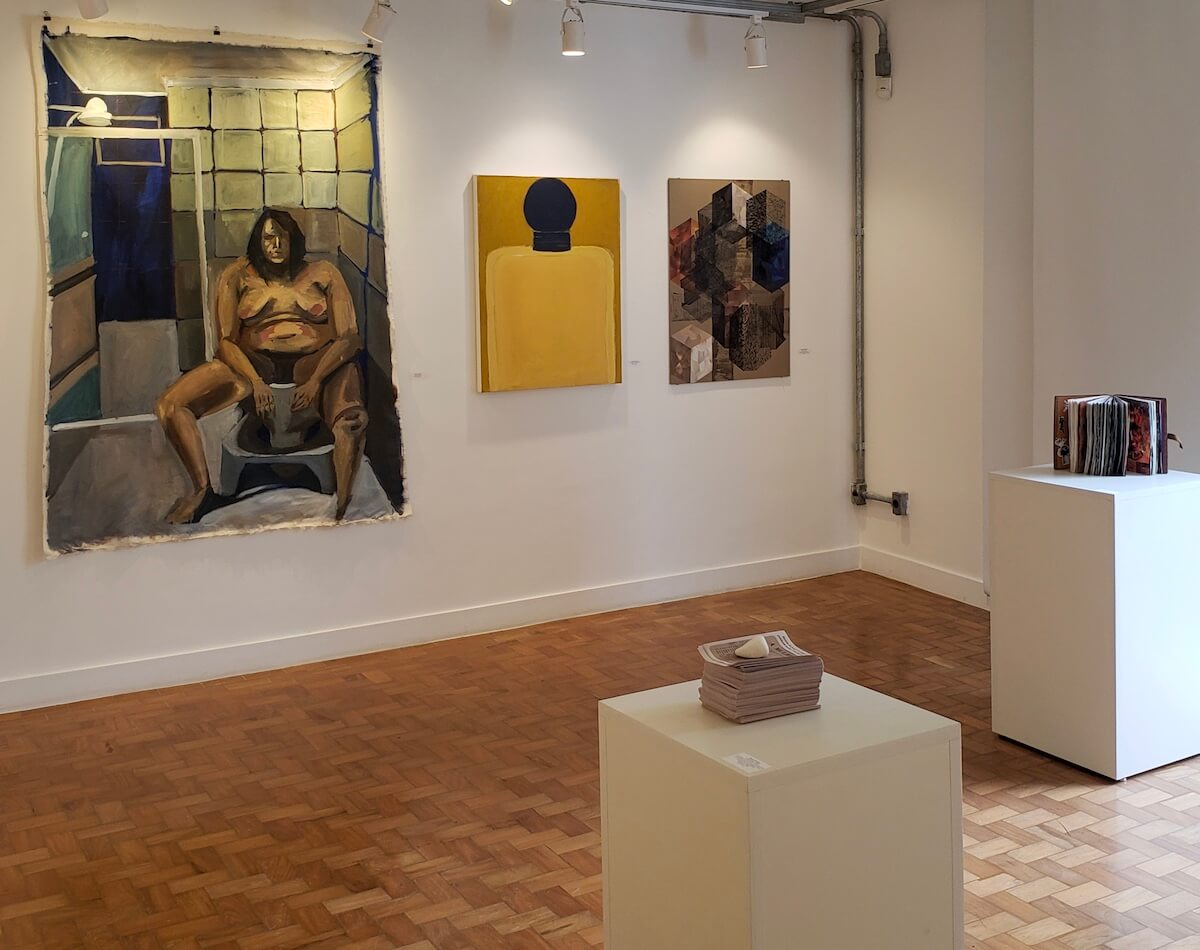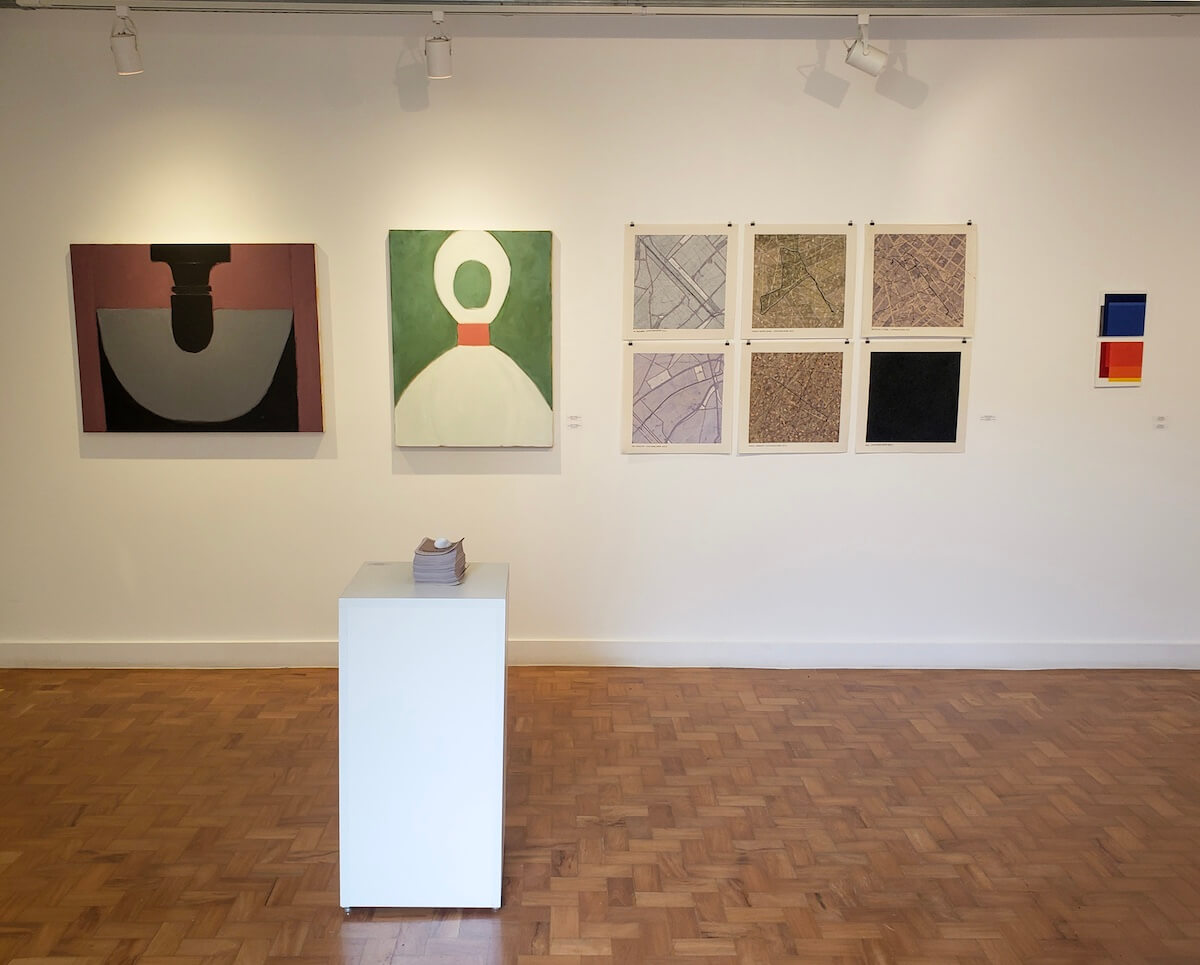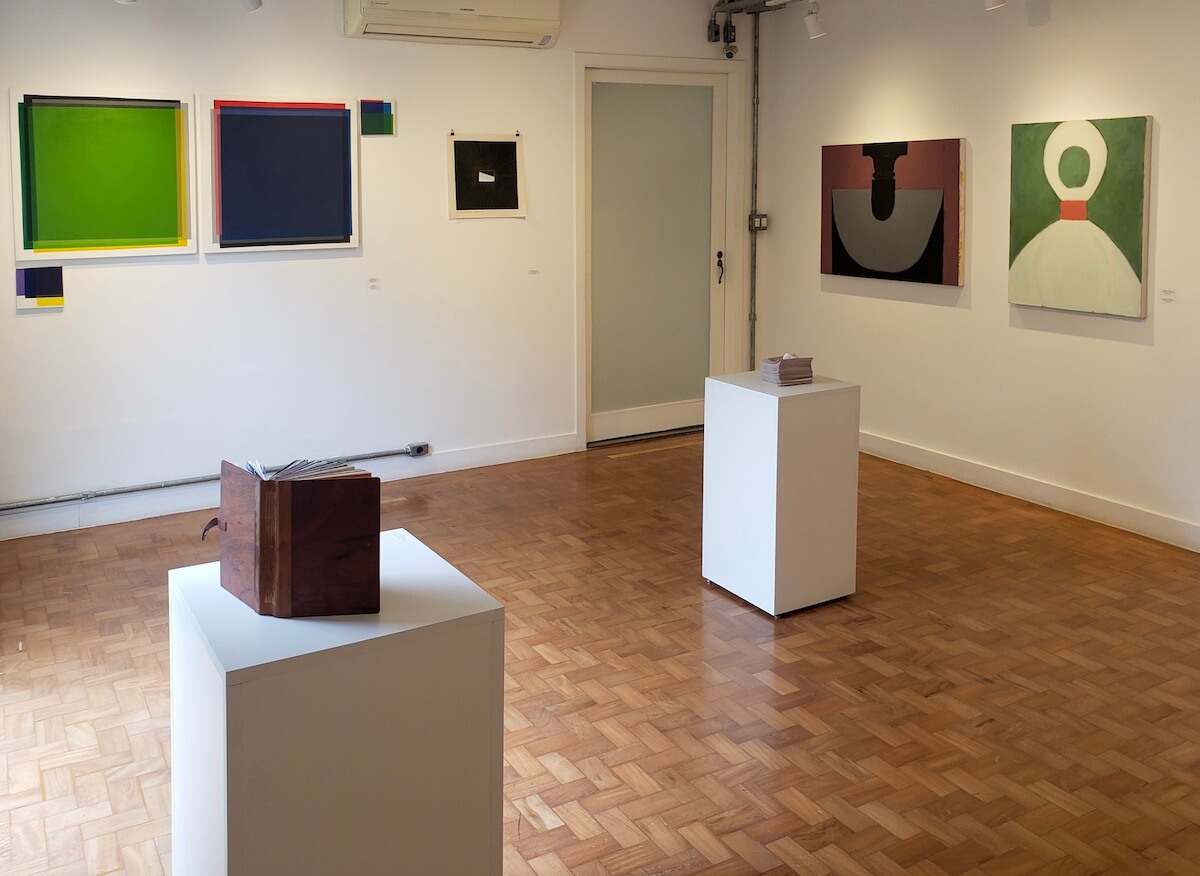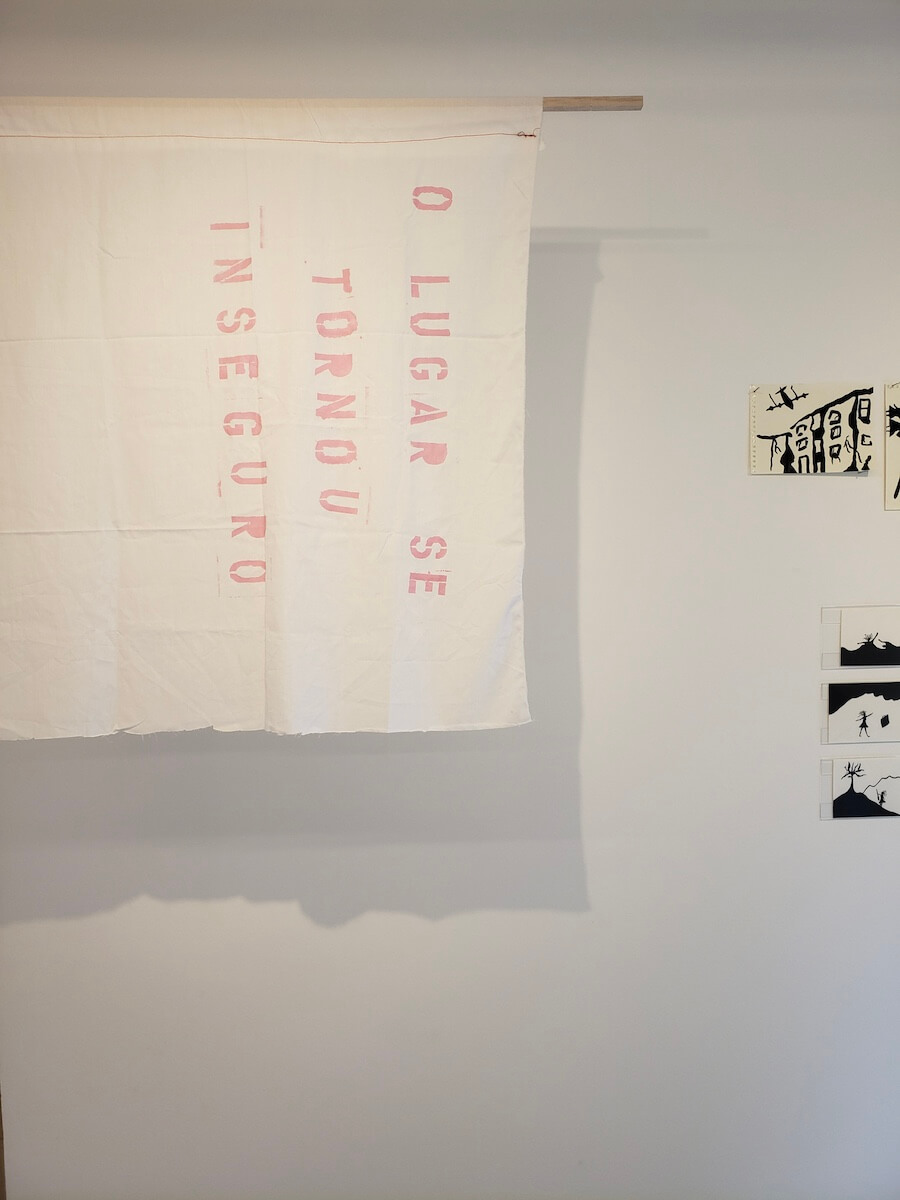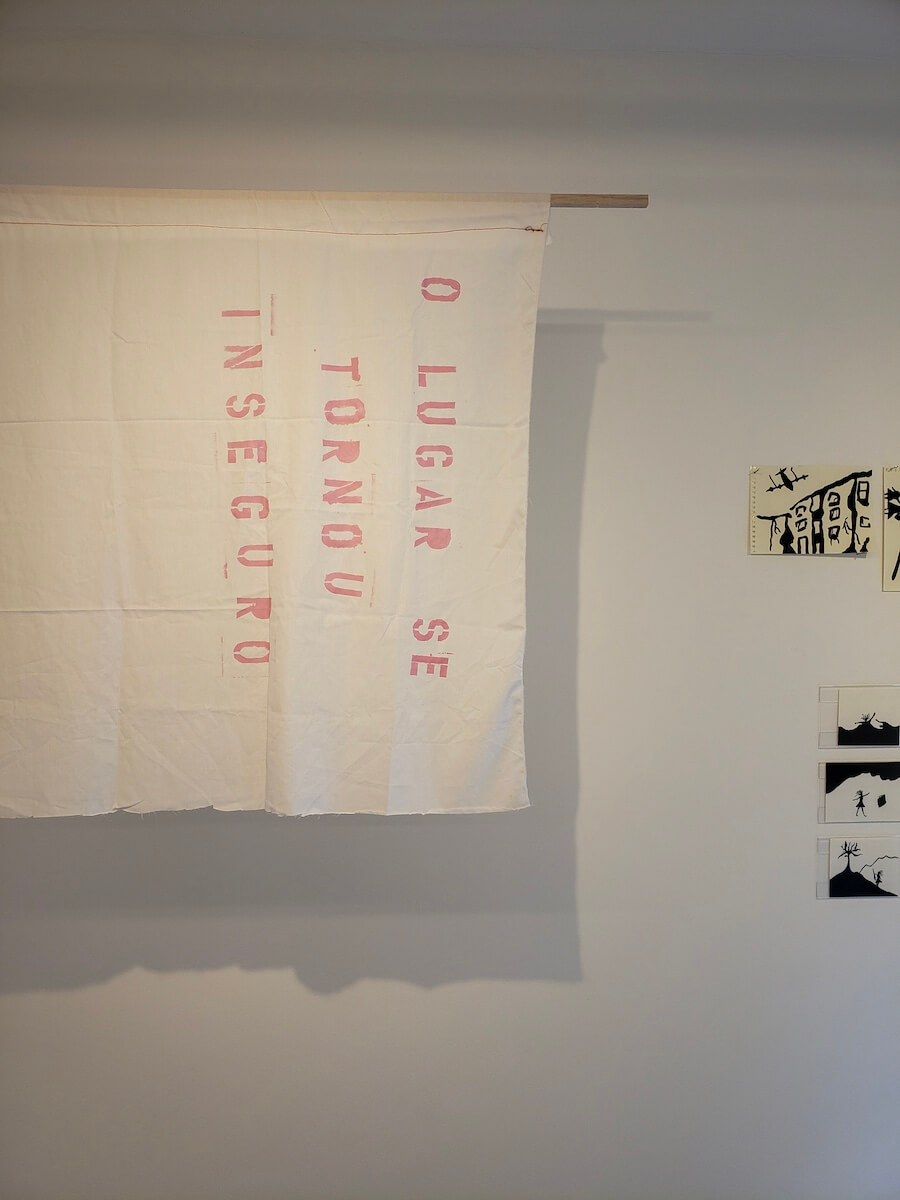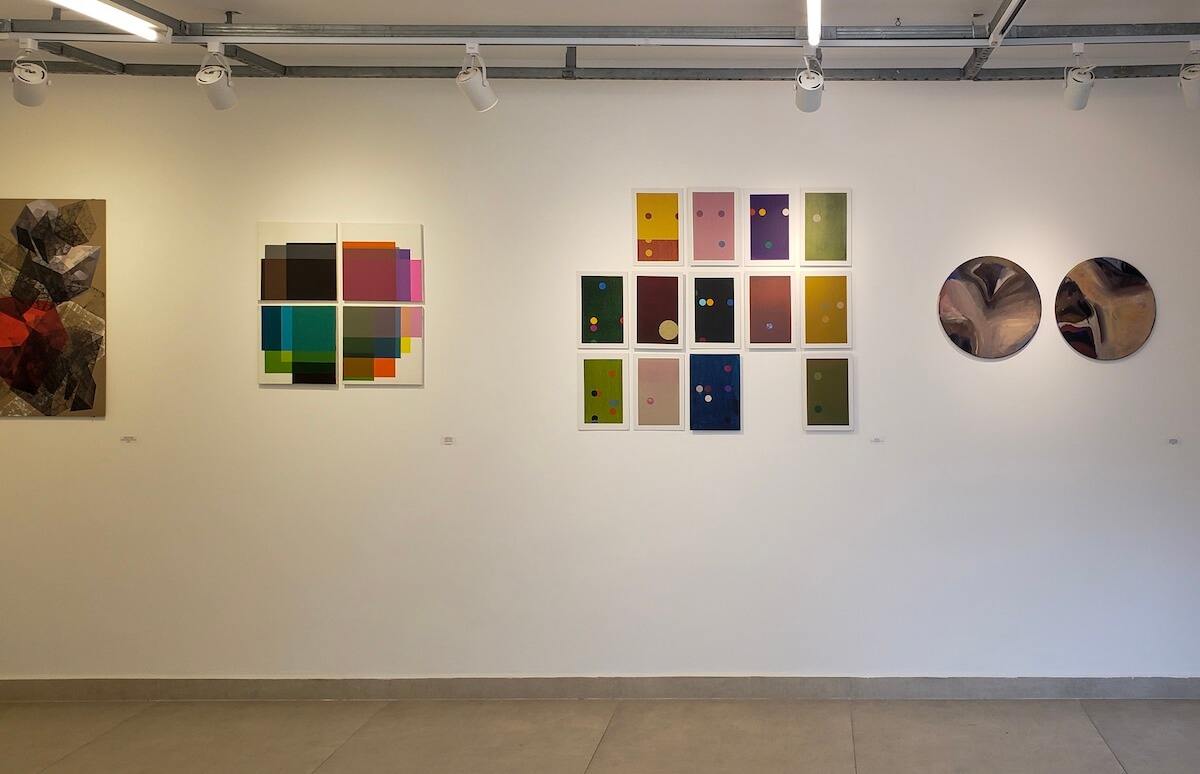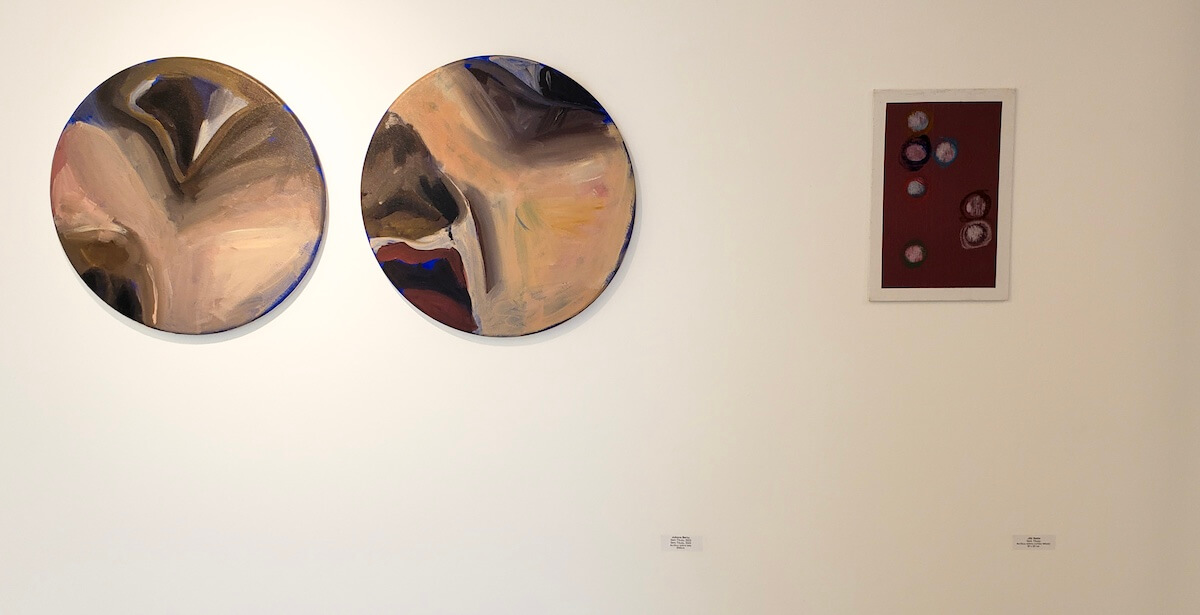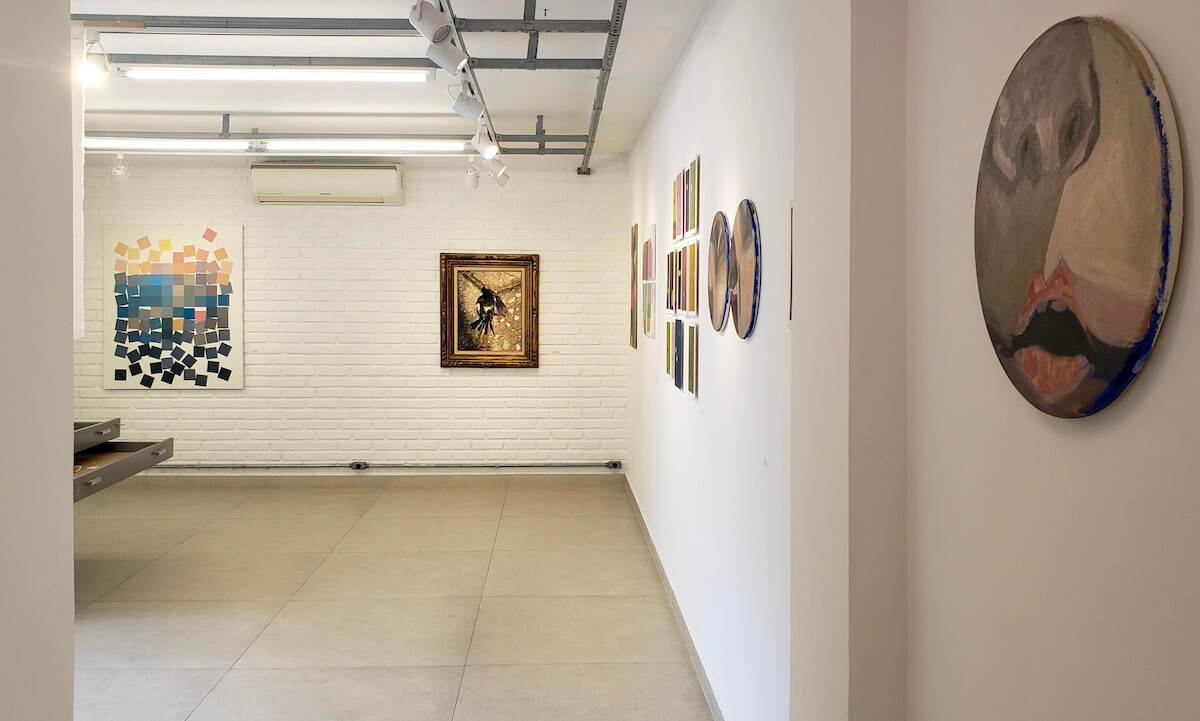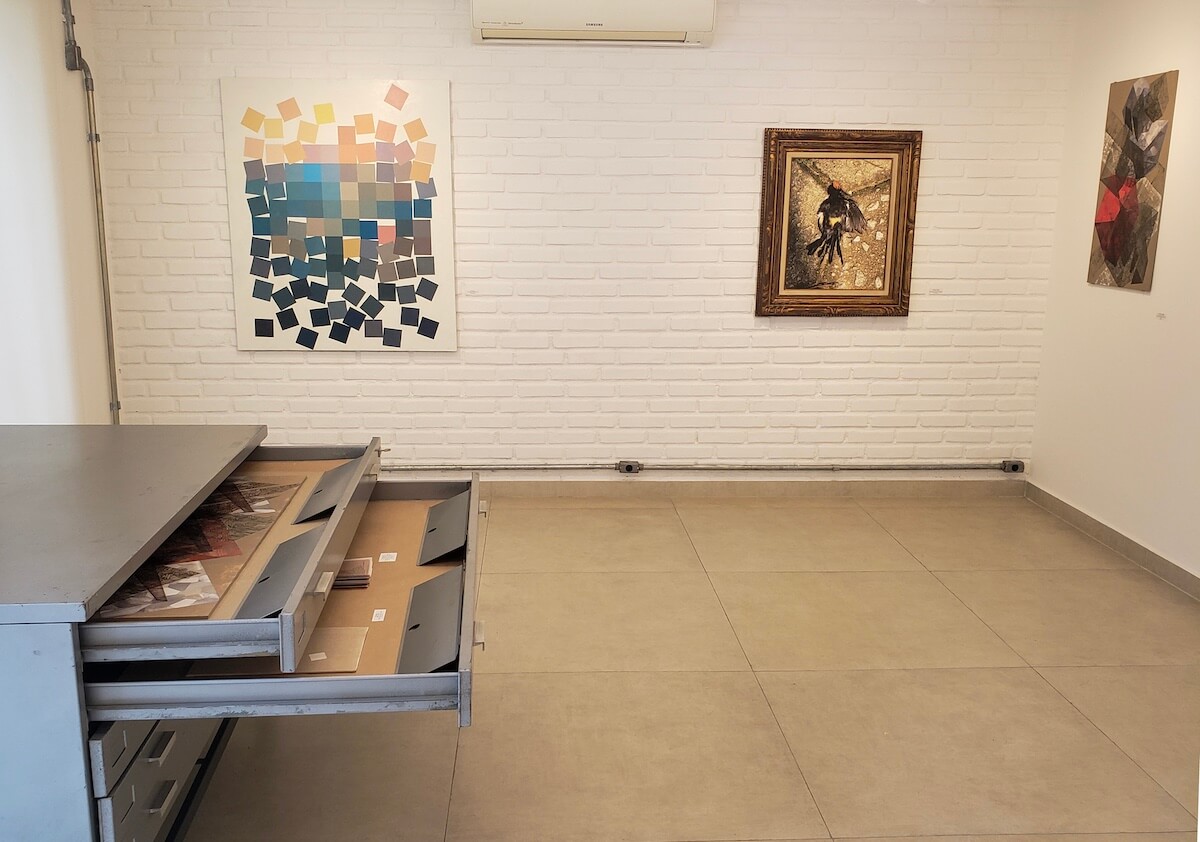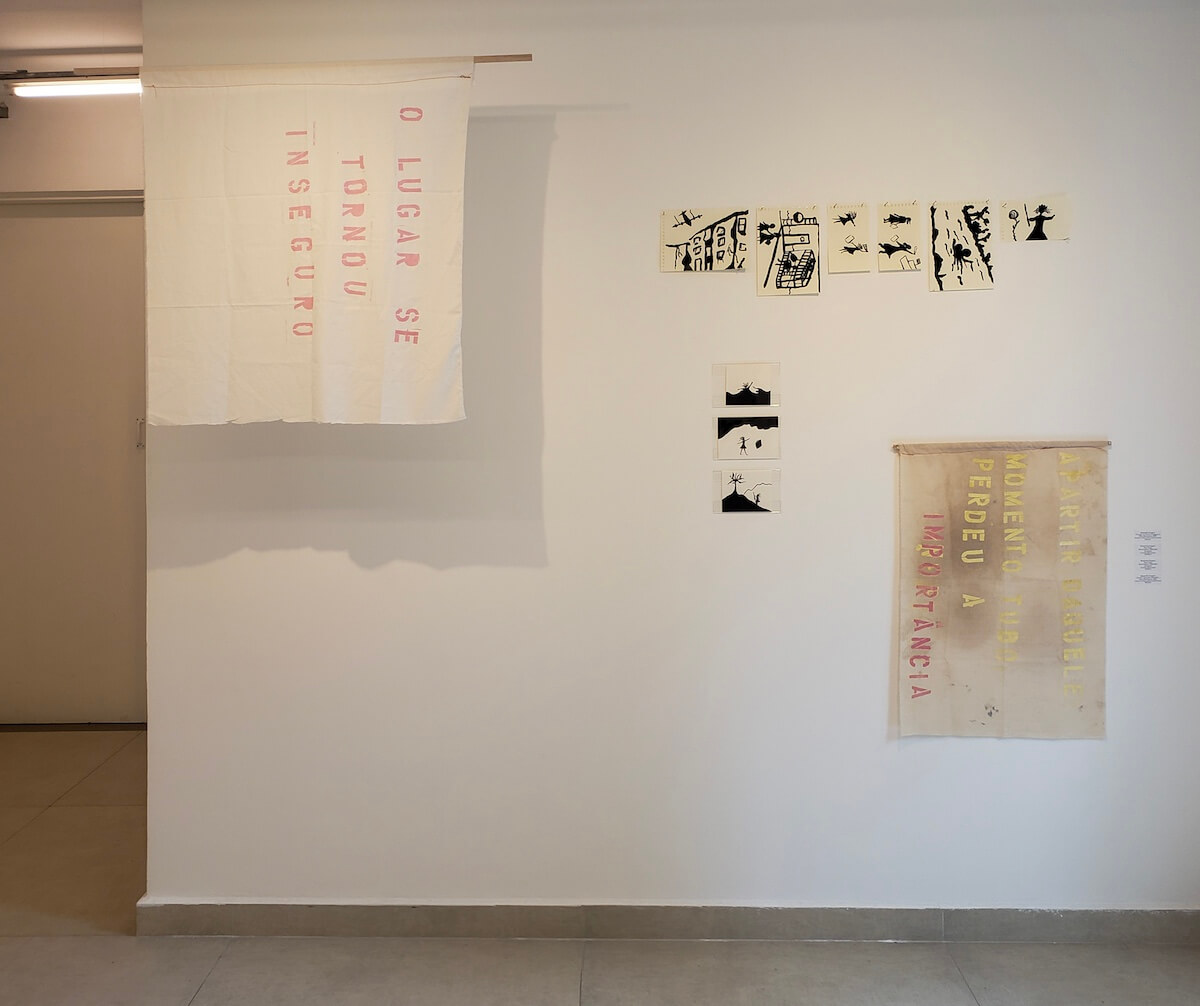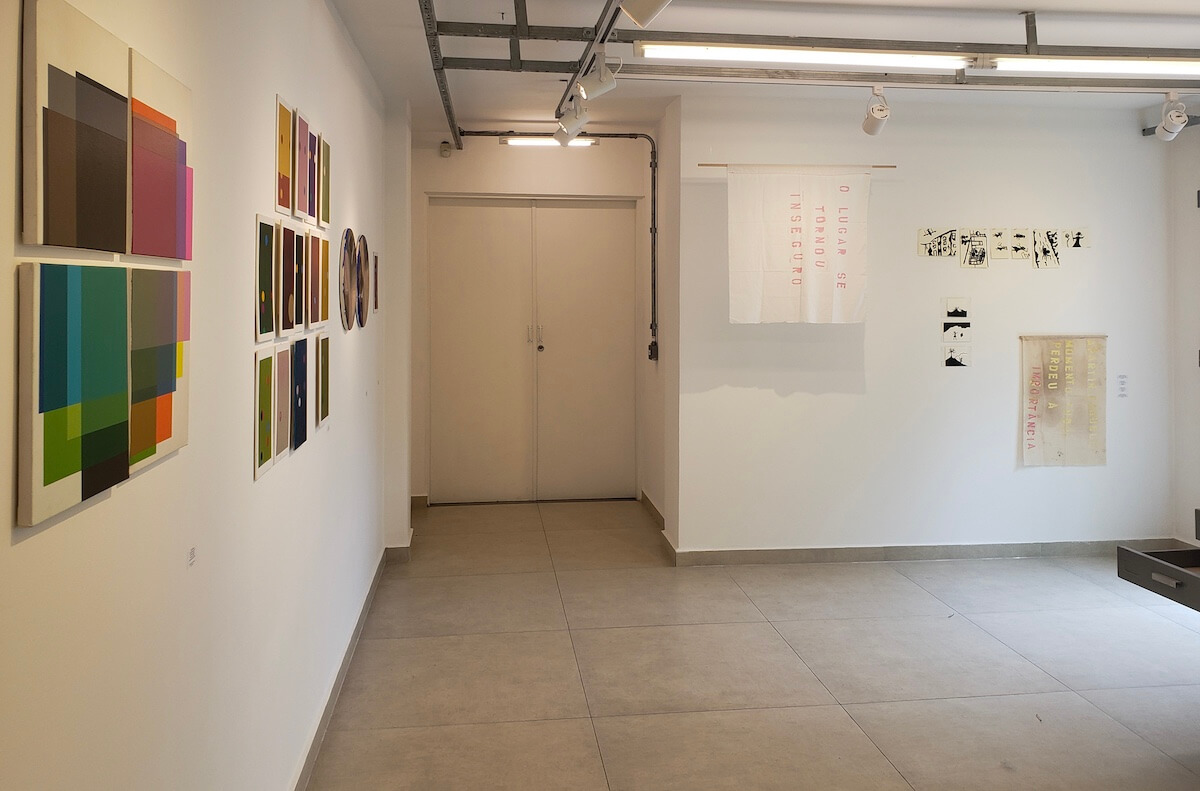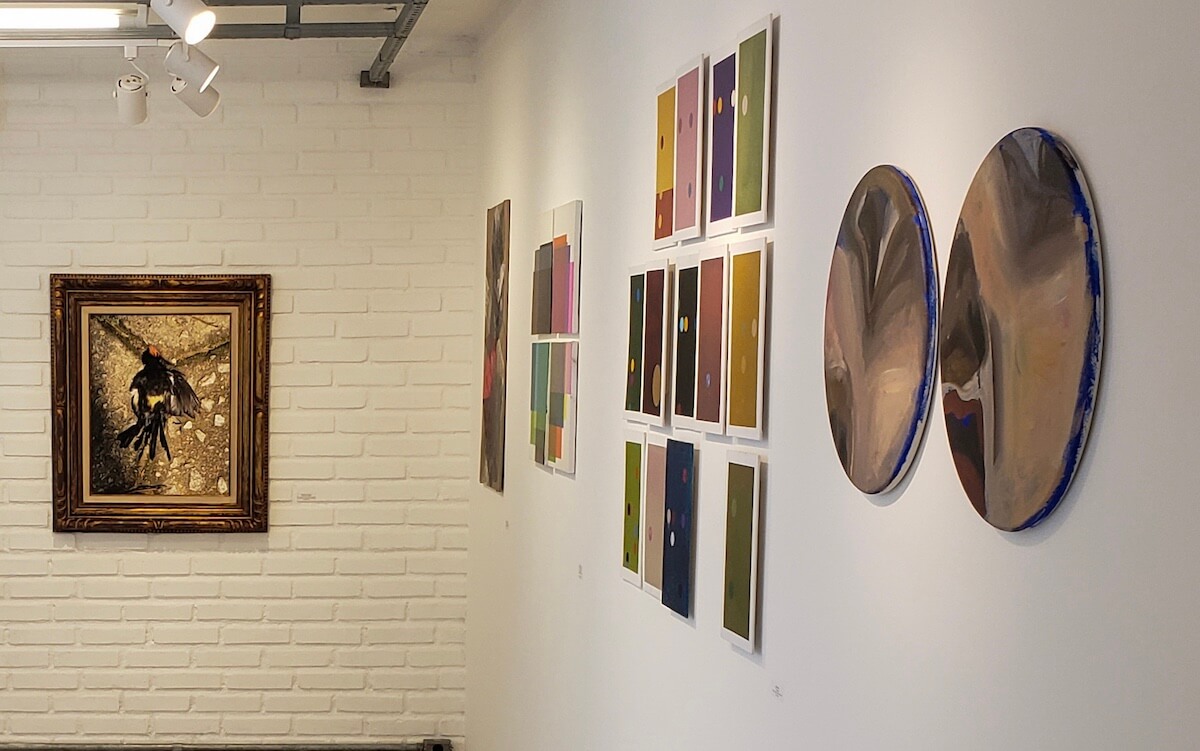
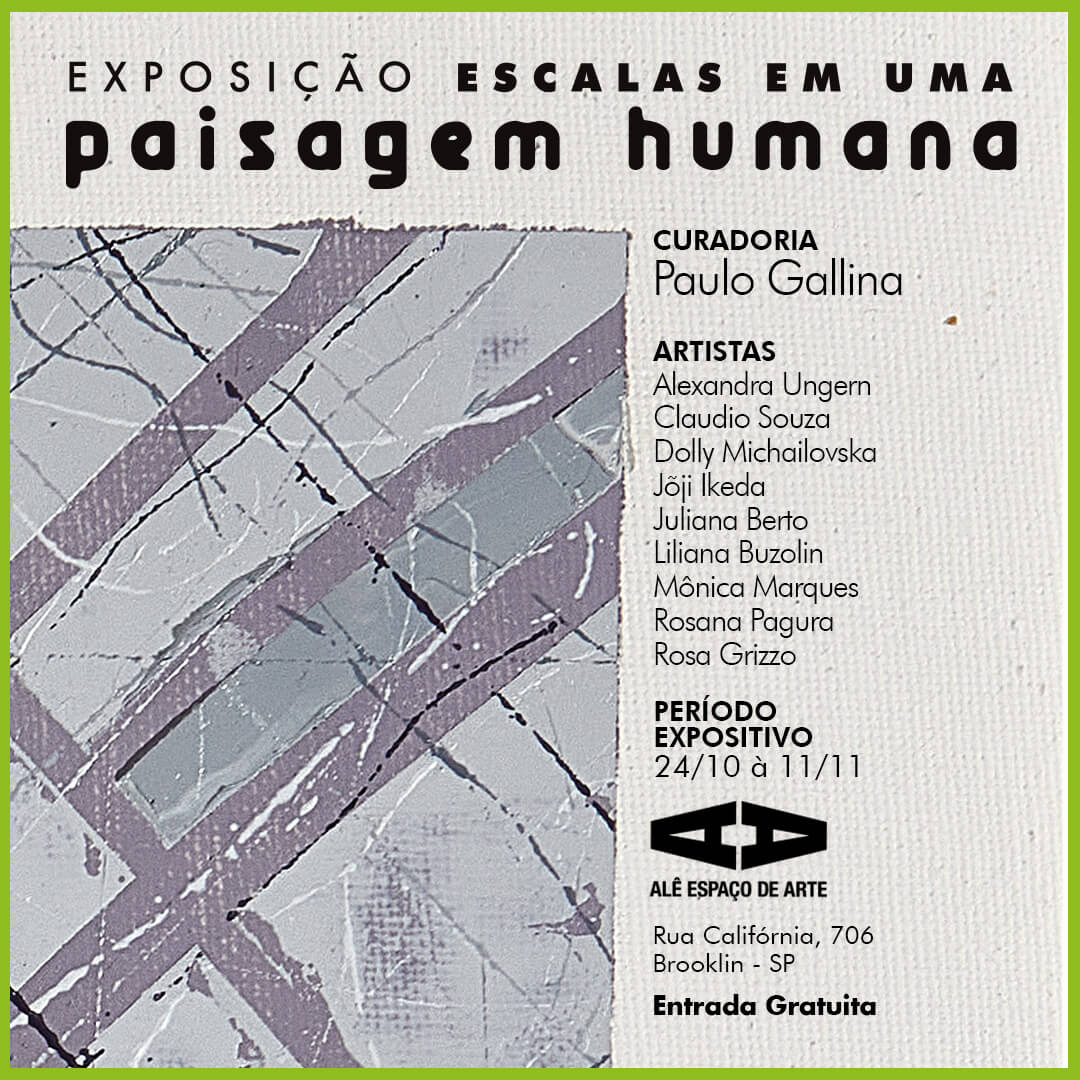
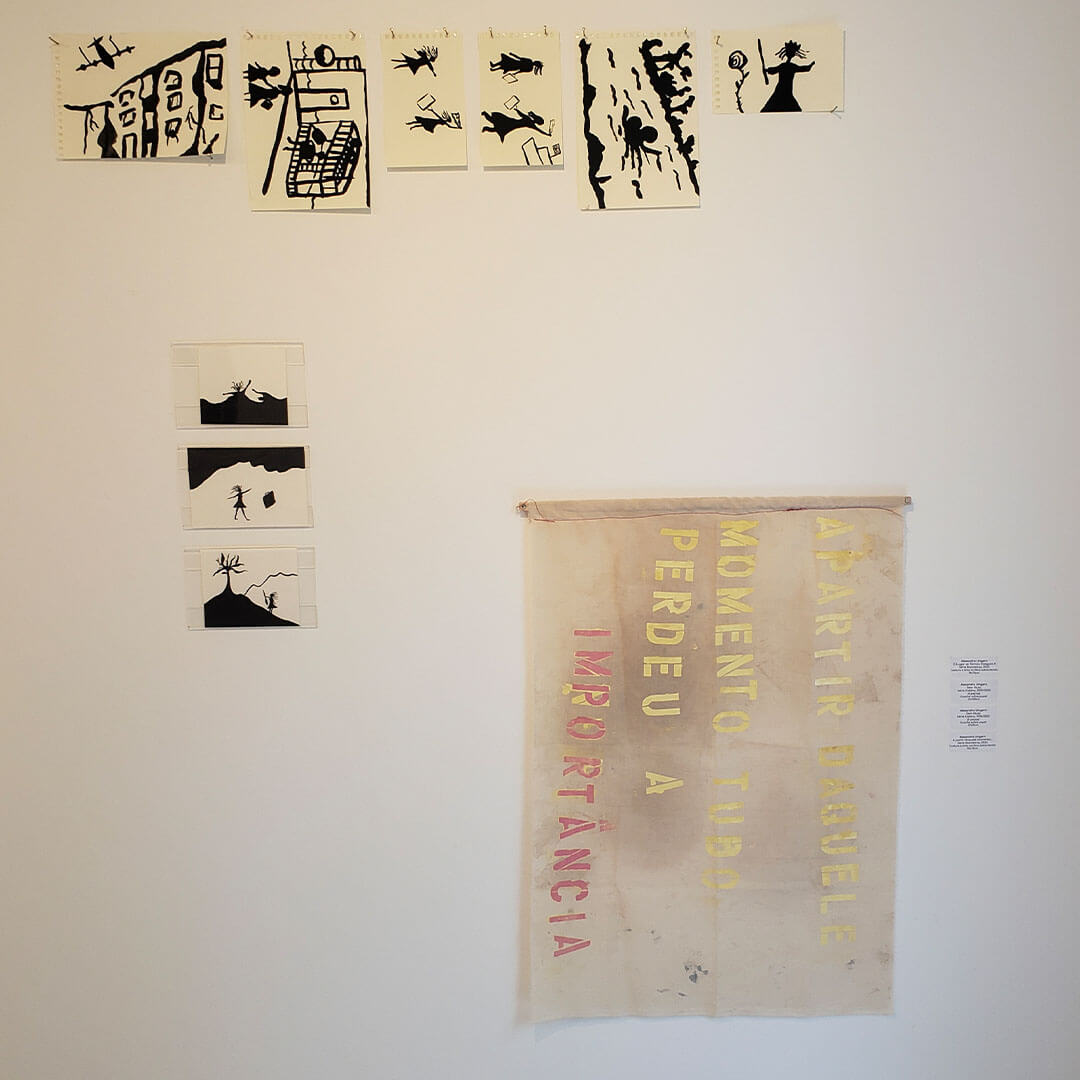
Escalas em uma Paisagem Humana
[Scales in a human landscape]
Curator: Paulo Gallina
Opening: 10/21 from 4pm to 8pm
Exhibition period: 10/24 to 11/11/2023
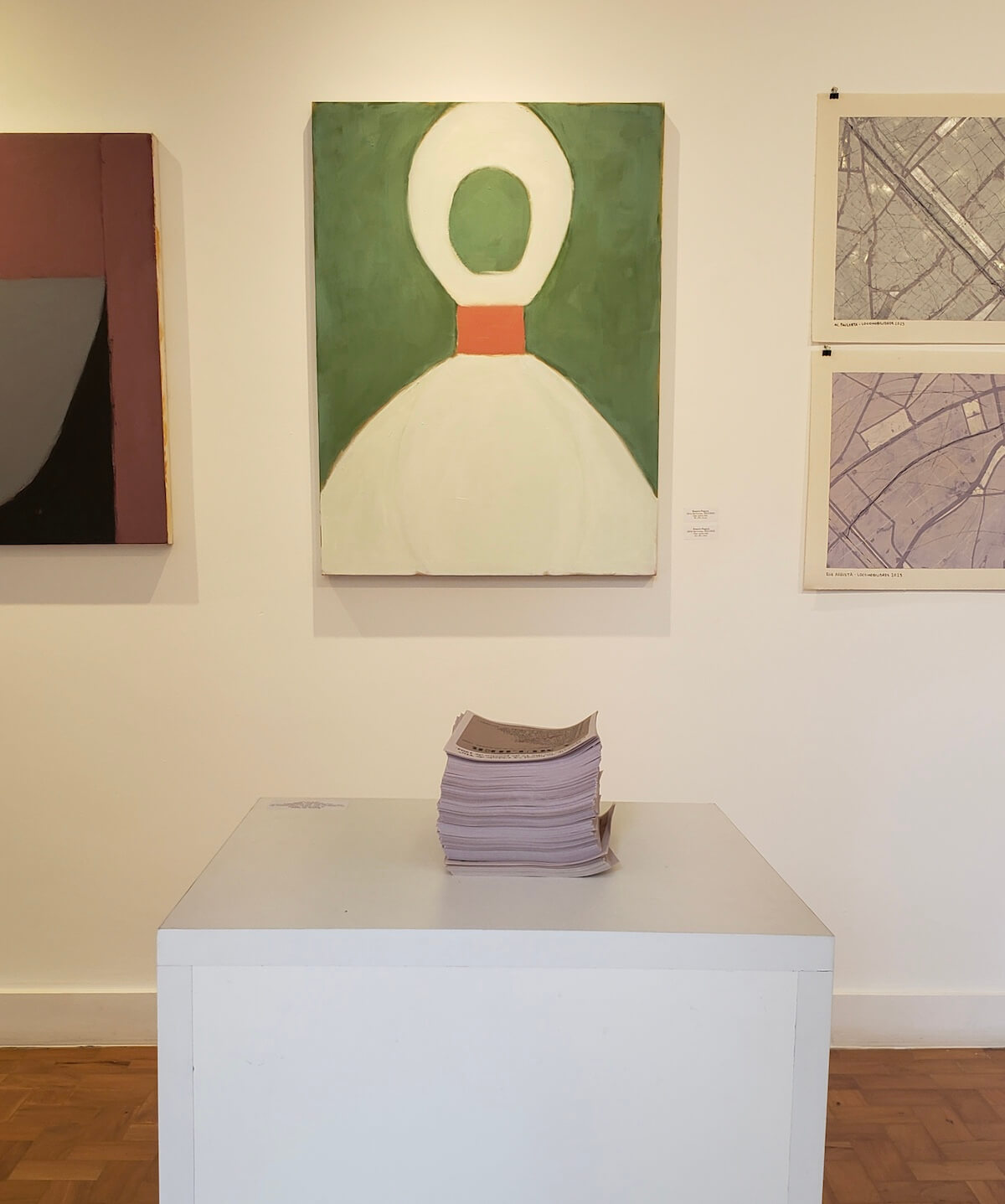
“As a genre of images, landscape deals with space. It is a representation of everything that the eye touches to form an understanding of the continuity between the looking self and the horizon, always fixed and always changing [after all, with each step taken by the observer, the horizon also moves one step further]. The question then posed by the Human Scales in a landscape is how each subject understands himself between the surroundings, always in contact with the subjects, and the individuals we choose to be or become .
Thus, each artist participating in this exhibition meditates on how subjects remove themselves from their surroundings and reaffirm themselves both in their uniqueness and in the community in which they live. While Alexandra Ungern retraces her family’s stories between drawings and slogans, an individual and individualized procedure; Claudio Souza points to the importance of paths – often invisible because they are repeated so frequently in everyday life – as a space for reflection, meditation and choices. If Dolly Michailovska approaches space as a pure power where the project and concreteness of her collages meet, Jõji Ikeda denies any representative quality – even abstract – in his paintings to present this void as a power for everything to happen. And so, the four artists ask visitors to review the foundations of their certainties between the virtual that mental monologues can produce and the harsh material reality that the world can refute.
Juliana Berto, in turn, with her auto-fictional portraits, goes back to the biographies of so many women in search of comfort and acceptance in a society marked by rules and conduct. It could be argued that this quality of affection that promotes self-care applies to all human beings, but this would be an extrapolation and an exaggeration, considering that it is on female bodies that perverse rules guided by consumer culture, especially fashion , it hits with greater force. So, [dear reader] please do not alienate yourself from this demand for solidarity and feel free to also place yourself there alongside these doubts in relation to self-care so encouraged in advertisements and perversely used by contemporary advertising. In this same sense, we can look at the work of Monica Marques, an artist from São Paulo now based in the interior of the state, who, in a kind of diary notebook, reports perceptions about what it is like to be a woman in the crazy metropolis that is São Paulo in the last decade. Her drawings are reflections of a set of feelings, good and bad, that populate and build the perception of self in a self that is not just for artists, but for all of us.
Liliana Buzolin’s work seems, like a geometric painting, to refute the concrete maxim that has been handed down to us today: every form has a mathematical counterpart. With paintings supported by sensitive theories about the relationship between what is incapable of enunciating and pointing out, Liliana seems to remind a society whose modus operandi is practice, and utilitarianism, that mathematics is not singularly the game of logic, it is , in truth, the logical application where logic is due. Thus, what would be chromatic overlays on veils so thin that they seem to contaminate the most visible colors with the superimposed colorations are, in fact, falsifications that insinuate veils when presenting chromatic combinations brought from the palette [it is necessary to remember, dear reader, that the palette for the painter it is the surface where she mixes the paints before applying them to the artist’s canvas. While Rosana Pagura’s paintings remind visitors that people smell, so do her paintings. Thus, the painter brings to this diffuse landscape the discussion about what smells you want for yourself and what smells inhabit the surroundings. The perfume bottles are portrayed, in Rosana’s hands, as zoomed-in characters. Highlighted in a space whose only index is the monochromatic background that sets the tone of the works presented.
Finally, Rosa Grizzo’s work is at once an appropriation, an alteration, a denunciation and a criticism of the set of prejudices distilled in a [no longer so] subtle way in a kind of poetry from the beginning of the 20th century that is also a customs manual. These words written by a man, with some desire to be poetic, are a manual of male domination in relation to female bodies that refuse to bend to the will and the rights and wrongs of a misogynistic model of society that still tries to preserve some quality of affection towards the female human being. Rosa’s procedure is simple: the text is reproduced as it was found and intervenes on it with a red stamp like lipstick. In the opposition between the male statement of the first decades of the 20th century and the female response of the first decades of the 21st century, there is an observation of a certain conservatism bequeathed to the present, as well as an indication of how fragile the achievements of female struggles in these centuries could be. years that separate the author from the artist.
It is with these operations of delving into the subjectivity of the research proposed by the artists and dialogue with the subjectivity of visitors that Human Scales in a Landscape seeks to deepen a certain understanding of what it is and what it means to be human here, now. In these troubled and powerful days that are yet to be founded after 2023.”
Text by Paulo Gallina
